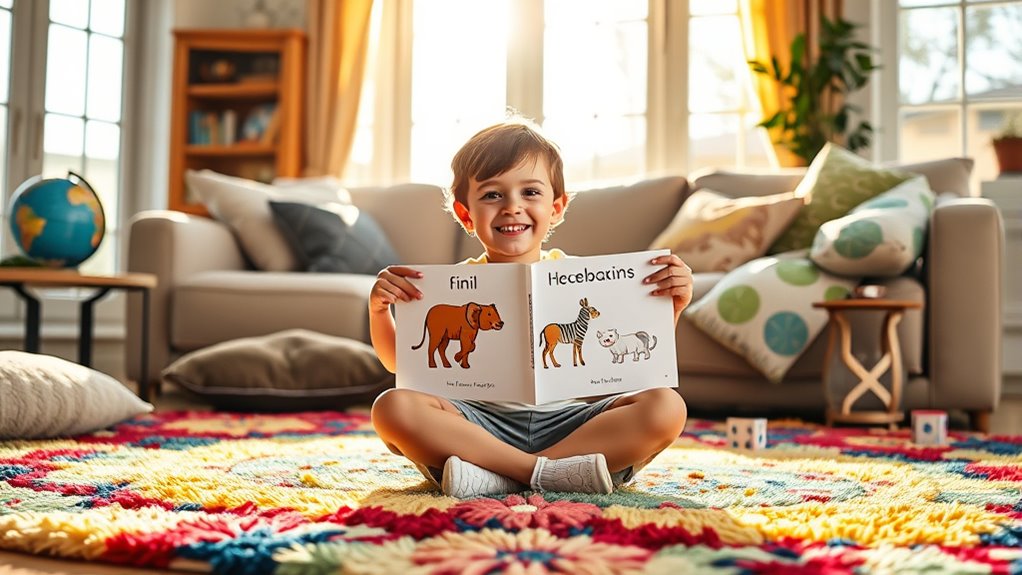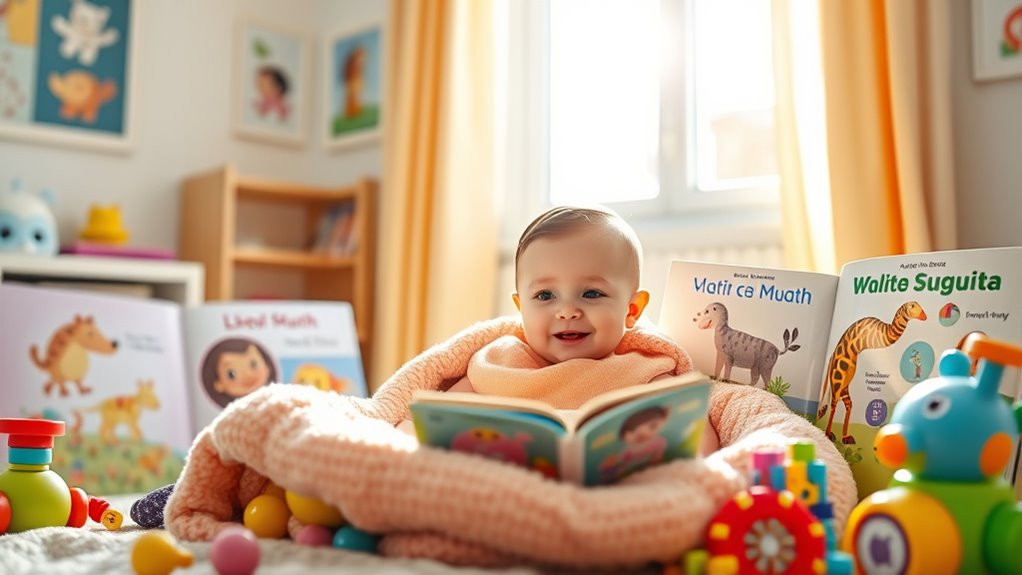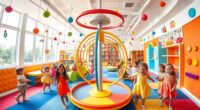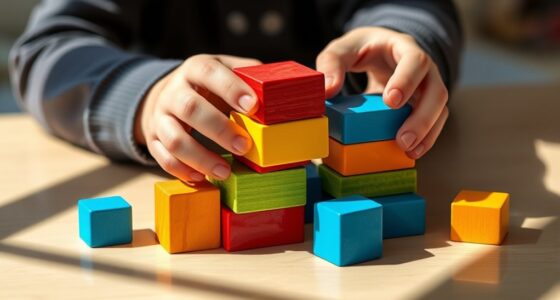Raising a bilingual baby doesn’t delay speech—in fact, it can boost brainpower and cognitive skills. Children learning multiple languages typically reach milestones at similar times as their monolingual peers, while also developing better listening, problem-solving, and multitasking abilities. They often gain a richer cultural identity and enhanced social skills. If you keep providing consistent, engaging exposure, your child will flourish in both languages and enjoy lifelong cognitive and cultural benefits. Keep exploring to see how you can support this exciting journey.
Key Takeaways
- Bilingual children develop speech milestones at similar times as monolingual peers.
- Exposure to multiple languages enhances cognitive skills like problem-solving and listening.
- Mixing languages or delayed speech are normal parts of bilingual development.
- Consistent, rich language exposure supports natural language growth without delays.
- Bilingualism offers long-term cognitive benefits like improved executive functioning and cultural understanding.

Raising a bilingual baby can seem challenging at first, but with intentional strategies, you can help your child develop fluency in two languages from an early age. One common concern among parents is whether exposing their little one to multiple languages might delay speech development. The truth is, research shows that bilingual children often reach language milestones at similar times as their monolingual peers. Instead of hindering speech, bilingual exposure actually supports overall language development by encouraging better listening skills, cognitive flexibility, and problem-solving abilities. Early language exposure also helps your child build a richer cultural identity, fostering a deeper understanding of their heritage and the world around them. When you consciously incorporate both languages into everyday routines—such as reading, singing, and chatting—you create a language-rich environment that promotes natural learning. This consistency helps your child associate words with objects and actions in both languages, reinforcing their understanding and use of each language contextually. It’s essential to be patient and understanding during this process. Sometimes, your little one might mix languages or take longer to speak in complete sentences, but these are normal parts of bilingual language development. Remember, your role is to provide positive reinforcement and keep the experience engaging and pressure-free. Using strategies like one-person-one-language or time-specific language separation can help clarify language boundaries and reduce confusion. For example, you might speak one language at home and another outside, or designate certain times of the day for each language. This approach helps your child distinguish between the two languages more easily and promotes balanced language skills. Supporting your child’s cultural identity through language is equally important. Celebrating cultural traditions, stories, and music in both languages deepens their connection to their roots. It also enriches their social interactions, allowing them to communicate with a broader range of people and appreciate diverse perspectives. Additionally, understanding the role of HEPA filters and other air purification technology in creating a healthier environment can contribute to your child’s overall well-being, as cleaner air supports better respiratory health and cognitive functioning. While some parents worry about the complexity of learning two languages, know that your effort pays off in the long run. Bilingual children often have enhanced executive functioning, better multitasking skills, and increased sensitivity to cultural nuances. By fostering an environment that values both languages and cultures, you help your child develop a strong sense of self and confidence in their identity. Ultimately, your dedication to supporting your child’s bilingual journey not only boosts their cognitive abilities but also nurtures their cultural understanding, making them more adaptable and empathetic individuals in our increasingly interconnected world.
Frequently Asked Questions
How Early Should I Start Exposing My Baby to Multiple Languages?
You should start exposing your baby to multiple languages as early as possible, ideally during the first few months. Early language exposure helps support their developmental milestones and enhances language skills. The sooner you introduce different languages, the more natural it becomes for your baby to pick them up. Keep the environment rich in conversations and interactions, and you’ll foster both their cognitive growth and bilingual abilities effectively.
Can Bilingualism Cause Confusion Between Languages in Young Children?
Think of your child’s language development as a garden. Sometimes, they might mix words or switch codes like colorful flowers blending together, which is natural. Bilingualism can cause some language mixing or code switching early on, but it doesn’t mean confusion. Instead, it shows your child’s brain is weaving two languages into their growing understanding, enhancing cognitive skills rather than causing chaos.
What Are the Best Strategies for Balancing Two Languages at Home?
You can balance two languages at home by establishing clear routines, like one person speaking each language or designated times for each. Be patient with language mixing, as it’s natural and helps reinforce learning. Encourage your child’s cultural identity by sharing stories, music, and traditions from both backgrounds. Consistent exposure and positive reinforcement help your child become confident in both languages without confusion or delay.
Does Raising a Bilingual Child Affect Their Social Development?
You might wonder if raising a bilingual child impacts their social development. Generally, it doesn’t hinder their progress; in fact, it can enhance social confidence as they navigate multiple languages and cultures. While some language mixing occurs, it’s normal and shows their growing language skills. This bilingual environment encourages adaptability and communication, ultimately supporting your child’s social development and helping them build stronger relationships across diverse settings.
Are There Any Long-Term Cognitive Benefits of Bilingual Upbringing?
Imagine your child’s brain as a bustling city, wiring itself in complex ways. Bilingual upbringing unlocks impressive neuroplasticity benefits, allowing their mind to adapt and grow faster. Over time, this boosts executive function—improving problem-solving, multitasking, and decision-making. You’ll notice your child steering through challenges with ease, their brain strengthened long-term. This isn’t just about language; it’s about cultivating a resilient, agile mind that thrives well into adulthood.
Conclusion
Raising a bilingual baby is like planting two seeds in one garden—you might worry they’ll compete for space, but in time, they’ll grow stronger together. Studies show bilingual children often develop enhanced cognitive skills and greater cultural awareness. I remember a parent telling me how her little one’s dual languages blossomed, opening doors to new worlds. So, trust the process—your child’s brain is a fertile ground for both language and lifelong growth.










